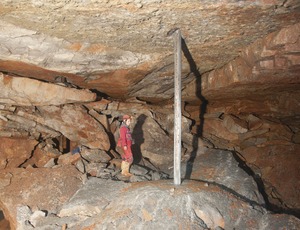
Sinkholes are common in karst areas, but karst got more attention last year after the destruction of eight specimen sports cars at the National Corvette Museum in Bowling Green, Ky.
All 50 states have karst, but it is concentrated in Kentucky, Tennessee, Florida and Pennsylvania, where water-soluble rock such as limestone, dolomite and gypsum can form sinkholes, caves or problematic underground drainage paths. Possible results: the museum-floor collapse, a sudden road cave-in or a sunken house.
"It is possible to build safely in a karst area," though there are no applicable regulations or guidelines, says Jason Polk, assistant professor of geography and geology at Western Kentucky University. But, he adds, "each situation is unique, and for large facilities or utility infrastructure, it really requires a team approach with the developer, government and experts to create a safe approach."
Jim LaMoreaux, chairman of PELA GeoEnvironmental, Tuscaloosa, Ala., advocates use of ground-penetrating radar or electro resistivity "to determine low-, medium- and high-risk areas for development."
Bashir Memon, PELA executive vice president, also wants study of the area hydrogeology, looking at wells, the water level and the frequency of drought. Knowledge of area drainage is also important for keeping water away from a building, he says.
Matt Dettman, associate professor of civil engineering at WKU, also recommends microgravity or electro-resistivity testing. He acknowledges that a standard geotechnical study of a Home Depot, for example, might cost $8,000 to $10,000, a price that could double for an electro-resistivity study.
But the amount of information about the building site—and potential for finding a sinkhole—increases. "If you do nothing, you're 50-50; if you spend another $20,000, you've upped the odds to a 70% ballpark chance it might show a sinkhole," Dettman says.
Owners "have to put that money into perspective," especially when the building is a hospital or a school, he says.
WKU, in a known karst area, did a study for a planned new building—and found bedrock "a couple of feet" below the surface, he says.
LaMoreaux is co-chairing the Sinkhole Conference for engineers, geologists and geographers on the engineering and environmental impacts of karst, Oct. 5-9 in Rochester, Minn.
Dettman joined with Ron Rizzo, staff engineer at WKU, to develop VoidX, a detection device that's triggered by air underground and can issue an alert or set off an alarm. It is installed in a sleeve and sits flush with a concrete slab. Some prototypes are in use, but the price has not yet been determined. Information is available at www.voidsafe.com.



Post a comment to this article
Report Abusive Comment